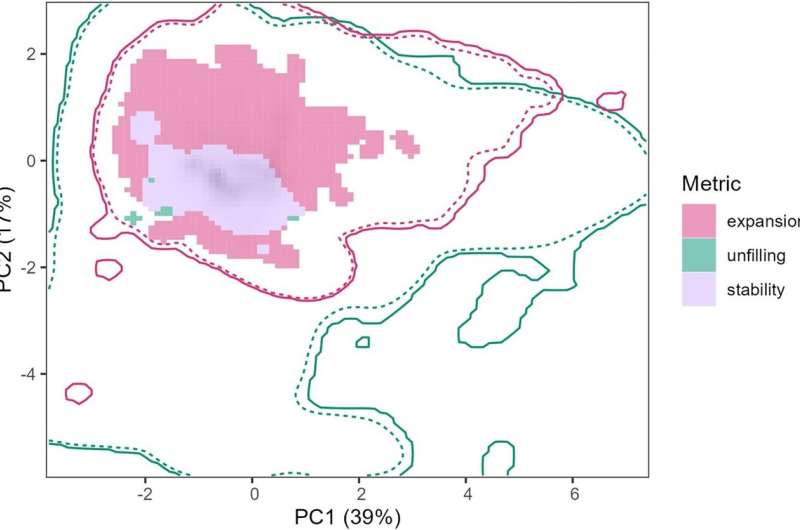This article has been reviewed according to Science X's editorial process and policies. Editors have highlighted the following attributes while ensuring the content's credibility:
fact-checked
trusted source
proofread
New study models NZ habitats most vulnerable to gold clam invasion

A new study published in the New Zealand Journal of Marine and Freshwater Research has modeled which habitats in Aotearoa New Zealand might be most vulnerable to gold clam invasion in the hope that management efforts can be targeted effectively.
The gold clam (Corbicula fluminea) is a highly invasive freshwater mollusk, which was detected in Aotearoa New Zealand in 2023. Currently, it has only been observed in the Waikato catchment, but there is significant concern it will spread across the country.
The findings suggest the highest risk areas are mostly located in Te Ika-a-Māui (North Island), in particular, northern Waikato, Auckland, Northland, Bay of Plenty and Hawke's Bay.
In Te Waipounamu (the South Island) areas with the highest habitat suitability included Marlborough, North Canterbury and Christchurch.
The paper's lead author, Rose Somerville, a Master of Science student in the University of Otago's School of Geography, completed the study alongside Cawthron Institute freshwater scientists Dr. Calum MacNeil and Dr. Finnbar Lee while on placement at Cawthron as a summer scholar.
Somerville says there is an urgent need to identify suitable habitat for the species beyond the Waikato, given the high probability of spread.
"Our aim was to use modeling to identify habitats in different parts of Aotearoa New Zealand that would be the most suitable for the gold clam to thrive in by looking at environmental variables associated with the species' distribution here and in other parts of the world where it lives," she says.
"We looked at environmental variables such as temperature, slope, elevation, the sand content of the river/lakebed, and the pH of the water.
"The value of using a statistical model is it gives us a bit of a head start on the invasion. By identifying freshwater habitats with similar conditions to those where the gold clam occurs internationally, we can allocate resources to high-risk environments."
Somerville says it's also important to note that these predictions are based on past climatic conditions and do not account for future climate change.
"Worryingly, we found temperature to be a key driver of habitat, with the gold clam preferring warmer waters, suggesting that climate change may result in more of the country becoming suitable habitat for the clam."
Dr. MacNeil, an invasion ecologist at Cawthron Institute, says the gold clam is a major threat to Aotearoa New Zealand's freshwater ecosystem health.
"Because it's a recent arrival, the long-term impacts of invasion are yet to be determined, but there's a lot of evidence to suggest gold clam could outcompete other species including our native freshwater mussel species the Kākahi," he says.
"Beyond the damage to ecosystems, gold clam has also been reported to cause damage to infrastructure by biofouling things like water treatment systems and power plants."
Freshwater ecologist Dr. Lee says the study suggested the focus should be on preventing the species from gaining a foothold in new habitats.
"Eradication is a very difficult task once the species has established, so we should focus on preventing it from spreading in the first place," he says.
"Our study only considered where the clam is most likely to spread, but another important consideration is how the clam may move between catchments, for example spread via fishing gear, boats or trailers.
"Identifying the potential dispersal pathways between catchments will further inform where management should be targeted.
"We hope this study helps to direct and inform monitoring and management in areas where it's most needed and look forward to sharing these results with environmental managers and biosecurity organizations."
More information: Rose Somerville et al, Habitat suitability of Aotearoa New Zealand for the recently invaded gold clam ( Corbicula fluminea ), New Zealand Journal of Marine and Freshwater Research (2024). DOI: 10.1080/00288330.2024.2368856
Provided by University of Otago




















